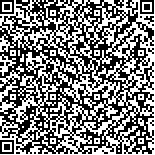苏盼盼,卢倩,叶朋,等.视觉剥夺训练联合低频重复经颅磁刺激对脑卒中患者下肢运动功能的影响[J].中华物理医学与康复杂志,2025,47(9):809-814
扫码阅读全文

|
| 视觉剥夺训练联合低频重复经颅磁刺激对脑卒中患者下肢运动功能的影响 |
|
| |
| DOI:10.3760/cma.j.cn421666-20250309-00208 |
| 中文关键词: 脑卒中 视觉剥夺 重复经颅磁刺激 运动功能 |
| 英文关键词: Stroke Visual deprivation Transcranial magnetic stimulation Motor functioning |
| 基金项目:苏州市科技局医学应用基础研究项目(SKY2023033) |
|
| 摘要点击次数: 577 |
| 全文下载次数: 466 |
| 中文摘要: |
| 目的 观察视觉剥夺训练(VDT)联合低频重复经颅磁刺激(rTMS)对脑卒中患者下肢运动功能的影响。 方法 将符合标准的50例脑卒中患者按照随机数字表法分为对照组和观察组,每组25例。2组患者均接受常规康复训练,在此基础上,对照组增加低频rTMS治疗,刺激部位为健侧半球初级运动皮质区(M1,足运动皮质代表区),观察组增加低频rTMS和VDT干预。治疗前、治疗4周后(治疗后),采用Fugl-Meyer运动功能量表下肢部分(FMA-LE)、患侧胫骨前肌表面肌电信号的均方根值(RMS)、Berg平衡量表(BBS)、改良Barthel指数(MBI)、计时起立行走测试(TUGT)、Tinetti步态评估量表(TGA)评价2组患者的下肢运动功能、平衡功能、日常生活活动(ADL)能力和步行能力。 结果 2组患者治疗后的FMA-LE评分、患侧胫骨前肌RMS、BBS评分、MBI评分、TUGT时间、TGA评分均较组内治疗前明显改善(P<0.05),且观察组治疗后的FMA-LE评分[(24.16±4.76)分]、患侧胫骨前肌RMS[(29.93±7.55)μV]、BBS评分[(41.24±4.36)分]、MBI评分[(77.36±9.60)分]、TUGT时间[(23.97±5.68)s]、TGA评分[(8.32±1.65)分]较对照组改善优异(P<0.05)。 结论 VDT联合低频rTMS可有效改善脑卒中患者的下肢运动功能、平衡功能和步行能力,且其疗效优于单一低频rTMS。 |
| 英文摘要: |
| Objective To observe any effect of combining visual deprivation training (VDT) with repeated low-frequency transcranial magnetic stimulation (rTMS) in the treatment of lower limb motor dysfunction among stroke survivors. Methods Fifty stroke survivors were randomly assigned to either a control group or an experimental group (n=25 each). In addition to routine rehabilitation treatment, the control group received rTMS targeting the primary motor cortex (M1, lower limb representation area) of the unaffected hemisphere, while the experimental group also received VDT. Before and after 4 weeks of the treatments, everyone′s lower limb motor function, balance, gait and ability in the activities of daily living were evaluated using the Fugl-Meyer lower extremity assessment (FMA-LE), the root mean square (RMS) values generated through surface electromyography of the affected tibialis anterior muscle, the Berg Balance Scale (BBS), the Timed Up and Go Test (TUGT), the Tinetti Gait Assessment (TGA), and the modified Barthel Index (MBI). Results After the treatment, both groups showed significant improvements in their average FMA-LE, BBS, TUGT, TGA and MBI results, as well as in the RMS values of the affected tibialis anterior muscle. The experimental group showed significantly greater improvement compared to the control group. Conclusions The combination of VDT and low-frequency rTMS can effectively improve the lower limb motor function, balance and gait of stroke survivors. It is more effective than rTMS alone. The combined therapy is worthy of clinical application and promotion. |
|
查看全文
查看/发表评论 下载PDF阅读器 |
| 关闭 |
|
|
|